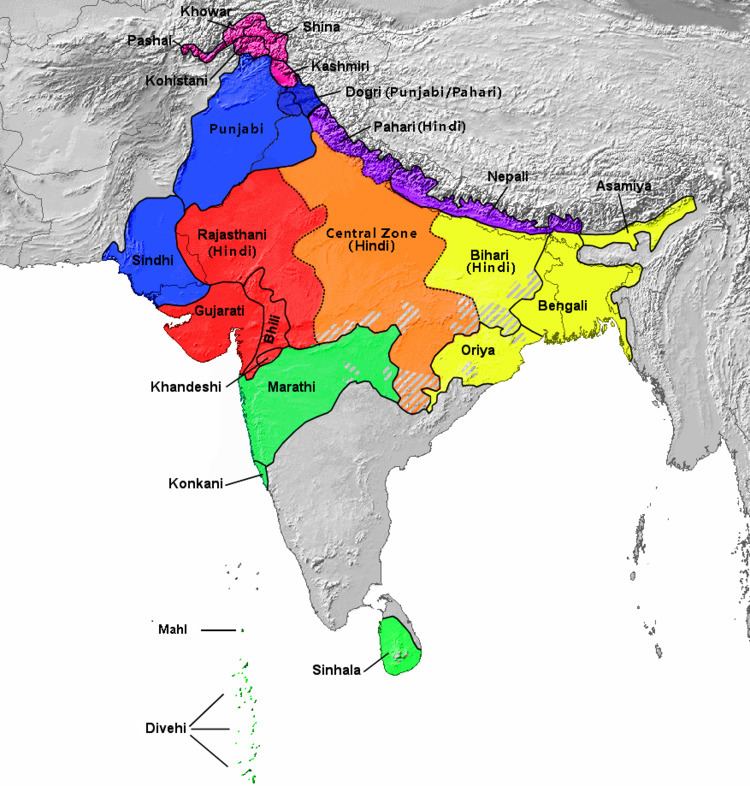India over 911 million Bangladesh over 160 million Sri Lanka over 14 million | Pakistan over 170 million Nepal over 26 million Burma over 1 million | |
 | ||
Indo-Aryan peoples are a diverse Indo-European ethnolinguistic group of speakers of Indo-Aryan languages. There are over one billion native speakers of Indo-Aryan languages, most of them native to South Asia, where they form the majority.
History
Some of the theories proposed in the 20th century for the dispersal of Indo-Aryan languages are described by linguist Colin Masica in the chapter, "The Historical Context and Development of Indo-Aryan" in his book, The Indo-Aryan Languages.
A recent Indo-Aryan migration theory proposed in the trade paperback, The Horse, The Wheel and Language, by David Anthony, a professor of anthropology at Hartwick College, claims that the introduction of the Indo-Aryan languages in the Indian subcontinent was a result of a migration of people from the Sintashta culture through the Bactria-Margiana Culture and into the northern Indian subcontinent (modern day India, Nepal, Bangladesh and Pakistan). These migrations started approximately 1,800 BCE, after the invention of the war chariot, and also brought Indo-Aryan languages into the Levant and possibly Inner Asia. It was part of the diffusion of Indo-European languages from the proto-Indo-European homeland at the Pontic steppe, a large area of grasslands in far Eastern Europe, which started in the 5th to 4th millennia BCE, and the Indo-European migrations out of the Eurasian steppes, which started approximately 2,000 BCE.
The theory posits that these Indo-Aryan speaking people may have been a genetically diverse group of people who were united by shared cultural norms and language, referred to as aryā, "noble." Diffusion of this culture and language took place by patron-client systems, which allowed for the absorption and acculturalisation of other groups into this culture, and explains the strong influence on other cultures with which it interacted.The Proto-Indo-Iranians, from which the Indo-Aryans developed, are identified with the Sintashta culture (2100–1800 BCE), and the Andronovo culture, which flourished ca. 1800–1400 BCE in the steppes around the Aral sea, present-day Kazakhstan, Uzbekistan and Turkmenistan. The proto-Indo-Iranians were influenced by the Bactria-Margiana Culture, south of the Andronovo culture, from which they borrowed their distinctive religious beliefs and practices. The Indo-Aryans split off around 1800-1600 BCE from the Iranians, whereafter the Indo-Aryans migrated into the Levant and north-western India.
